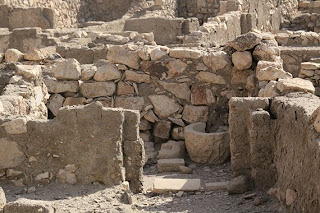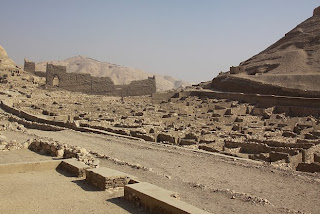New York Times (Katie Taylor)
Zahi Hawass, who resigned as Egypt’s minister of antiquities less than a month ago under criticism for his close ties to former President Hosni Mubarak, was reappointed to the post on Wednesday, Agence France-Presse reported, citing an Egyptian news report; Mr. Hawass, reached by phone, confirmed his reappointment.
Mr. Hawass, a powerful figure in the world of Egyptology, was promoted to a cabinet position in the early days of the uprising, and drew the animosity of the revolutionaries by saying at the time that Mr. Mubarak should be allowed to hold power for another six months. He also said that Egypt’s museums and archeological sites were largely secure and that cases of looting were very limited. In the weeks that followed, that turned out not to be the case: several dozen objects were stolen from the Egyptian Museum in Cairo during a break-in on Jan. 28 — many have been recovered, though 37 are still missing — and hundreds more were taken from tombs and warehouses elsewhere in Egypt.
Egypt State Information Service
Prime Minister Essam Sharaf assigned on Wednesday 30/3/2011 head of the Supreme Council of Antiquities Zahi Hawas to hold the antiquities portfolio.
In statements after meeting Sharaf, Hawwas said the ministry will immediately start an ambitious program to renovate Egyptian antiquities.
The Egyptian civilization is the greatest worldwide, Hawwas said, urging the Egyptians to help preserve the country's ancient history.
Hawwas has pledged to protect Egypt's antiquities against looting.
Hawwas said his first mission in the job is to preserve Egypt's antiquities against plunder. He urged the Egyptian people to assist him in this mission.
Several archaeological sites in Egypt have come under looting in the wake of the January 25 revolution.
Prime Minister Essam Sharaf will open several important archaeological projects soon in both the capital and other governorates, Hawwas said.
Amigos de la Egiptologia
En Egipto no hay que dar a nadie por muerto, y menos a Zahi Hawass. Con una capacidad de resurrección digna de Imhotep, el malo de La Momia, el exministro de Antigüedades vuelve a serlo cuando ya todo el mundo bailaba sobre su tumba. Habrá que ver ahora cómo rebobinan todos los que han dicho pestes de él o expresado críticas a su labor y su carácter. Habrá muchos que se digan que no tenían que haber hecho tan pronto astillas del árbol (uy, el obelisco) caído.
Conociendo a Hawass, habrá tomado buena nota de los enemigos que se le han destapado y antes o después pasará cuentas. El episodio tiene el sabor de esos cuentos antiguos en los que el rey (el faraón) se fingía moribundo o muerto para ver qué hacían los cortesanos. Una estrategia que usó por ejemplo sin ir mucho más lejos en la antigüedad Calígula.












